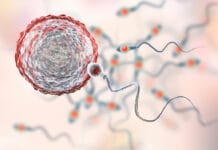In the world of forensic science, bitemark evidence has long been presented as a valuable tool in criminal trials. However, a recent review of the literature conducted by a team from the School of Dental Medicine at the State University of New York in Buffalo has highlighted the years of scrutiny on the serious flaws associated with this type of evidence, which has led to wrongful convictions and even death sentences in the United States.1 In forensic odontology, it is crucial to understand the limitations of bitemark analysis and be aware of its potential consequences on legal proceedings.
Flaws of Bitemark Evidence in Criminal Trials
The prevalence of bitemark evidence gained significant momentum following the 1979 trial of notorious serial killer Ted Bundy. This trial brought bitemark evidence to the forefront and gave it considerable attention.2 Unfortunately, the scientific community does not support the fundamental premise that human teeth possess unique characteristics that transfer accurately onto human skin. Bitemark transfer to the skin is highly unreliable. Distortions, even minor ones, can result in a significant number of individuals matching the purported bite marks.1
The research team’s findings are alarming, revealing a higher incidence of malalignment in lower teeth compared to upper teeth, leading to fewer matches. To arrive at these conclusions, the researchers analyzed actual indentations left on the skin by teeth, providing evidence of the flaws associated with bitemark analysis.
This review highlights the disturbing reality of wrongful convictions and the potentially devastating consequences of relying on bitemark evidence. It references cases such as Keith Allen Harward, who served 33 years in prison for a crime he did not commit, primarily based on a bite mark found on the victim’s skin. Only through DNA testing was Harward able to prove his innocence and secure his release.3 Similarly, Eddie Lee Howard spent 26 years on death row after being sentenced to death in 1994 based on bitemark evidence before DNA evidence and alibi witnesses eventually exonerated him.4
Expert Opinions on Bitemark Evidence
These cases are not isolated incidents. Previous studies have also questioned the reliability of bitemark evidence, including a comprehensive report by the National Academy of Sciences in 2009.5 This report explicitly stated that the notion that dentists could identify perpetrators by matching dental patterns to marks on victims’ bodies lacked scientific support. Despite these concerns, bitemark analysis continues to be used in courtrooms today.5
A recent review by the U.S. National Institute of Standards and Technology (NIST) further substantiates these doubts.6 The review found no scientific support for the core principles of bitemark analysis, including the uniqueness of human dentition at an individual level, the accurate transfer of this uniqueness to human skin, and the reliable capture and interpretation of identifying characteristics through analysis techniques.6
In Closing
The authors of this review state, “It should be stressed that the errors in analysis are not the result of incompetence or worse, intentional perjury. The conducted research demonstrates mistakes can easily be made. Simply stated, skin does not capture the details of the dentition reliably, and distortion plays a significant role. Scientific studies have revealed that other individuals could have certainly left similar marks, or there is a probability that an individual could have left a mark on skin that is not representative of their dentition. Either of these scenarios could lead to a false conviction or, the opposite, the exoneration of a guilty person. Neither of these scenarios or outcomes is acceptable.”1
The authors concluded, “Together with the work of others in the legal and scientific communities, we hope that our efforts in science will go a long way in preventing wrongful convictions based on bitemark evidence in the cause of true justice.”1
Before you leave, check out the Today’s RDH self-study CE courses. All courses are peer-reviewed and non-sponsored to focus solely on pure education. Click here now.
Listen to the Today’s RDH Dental Hygiene Podcast Below:
References
- Bush, M.A., Miller, R.G., Bush, P.J. Bitemark Analysis: The Legal vs Scientific Battle for Justice. Journal of the California Dental Association. 2023; 51(1): 2191391. https://www.tandfonline.com/doi/full/10.1080/19424396.2023.2191391
- Ramsland, K. (n.d.). Bite Marks as Evidence to Convict. Crime Library. https://www.crimelibrary.org/criminal_mind/forensics/bitemarks/1.html
- Keith Harward. (n.d.). Mid-Atlantic Innocence Project. https://exonerate.org/all-project-list/keith-harward/
- Convicted by False Forensic Evidence, Eddie Lee Howard, Jr. Exonerated from Mississippi Death Row After 26 years. (2021, January 12). Death Penalty Information Center. https://deathpenaltyinfo.org/news/convicted-by-false-forensic-evidence-eddie-lee-howard-jr-exonerated-from-mississippi-death-row-after-26-years
- National Research Council; Committee on Identifying the Needs of the Forensic Sciences Community; Committee on Science, Technology, and Law Policy and Global Affairs; Committee on Applied and Theoretical Statistics Division on Engineering and Physical Sciences. (2009). Strengthening Forensic Science in the United States: A Path Forward. National Academies Press. https://nap.nationalacademies.org/read/12589/chapter/1
- Sauerwein, K., Butler, J.M., Reczek, K.K., Reed, C. (2023). Bitemark Analysis: A NIST Scientific Foundation Review [NIST Interagency Report (IR) NIST IR 8352]. National Institute of Standards and Technology. https://doi.org/10.6028/NIST.IR.8352











